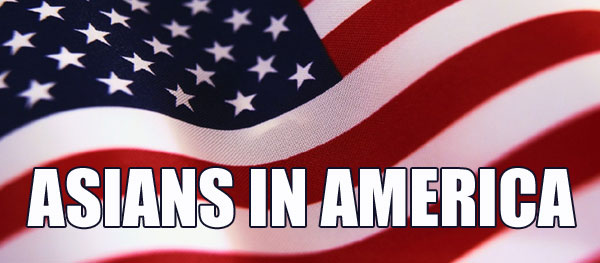
One of the most common problems with trying to figure out what’s actually happening with Asians in America is that most statistics and studies lump all Asians together into a single category. A new report from the Asian American Center for Advancing Justice (Advancing Justice) changes all that. The report, titled A Community of Contrasts: Asian Americans in the United States, 2011 is comprehensive, breaking statistics into each Asian subgroup and covering topics like unemployment, housing, education, immigration, and other aspects of the Asian experience in America. Because the report is so comprehensive and detailed, in this post, I’m just covering an Introduction and preview some of the statistics as they’re applied to the Asian American group as a whole.
The report gets its source material from not only the U.S. Census Bureau, but also information from the Centers for Disease Control and Prevention, U.S. Department of Education, U.S. Department of Homeland Security, and U.S. Department of State.
The report finds that Asian Americans are the fastest growing racial group in America. Between 2000 and 2010, the Asian American population grew by 46%, faster than any other racial group, and the states in the U.S. that led this growth were Nevada and Arizona, which increased their Asian American populations by 116% and 95% respectively. California remains the state with the largest Asian American population, with over 5.5 million Asian Americans, representing just under 15% of California’s population. In total numbers, Asian Americans make up 17.3 million Americans, representing 6% of the U.S. population.
Asian American have a big impact in business as well. Asian American entrepreneurs own over 1.5 million businesses and employ around 3 million people with an annual payroll of close to $80 billion. Asian American firms are also more likely than other firms to create jobs.
Asian Americans represent a fast growing and significant portion of the buying power of Americans. Between 2000 and 2009, the buying power of Asian Americans and Native Hawaiians and Pacific Islanders (NHPIs) increased 89%, from $269 billion to $509 billion. With a population size that is only one-third that of Latinos, the Asian American and NHPI population has half the buying power.
In terms of political clout, Asian Americans are becoming citizens, registering to vote, and casting ballots. Approximately 69% of Asian Americans old enough to vote are U.S. citizens. Of those eligible, 55% have registered to vote. There is one downside to this, and it’s the rate of Asian American voter turnout, which lags that of non-Hispanic Whites. And while Asian Americans have made strides in becoming citizens, it’s important to remember that 60% of Asian Americans were born outside the U.S., a rate still much higher than that of Latinos. This means we’re still largely a community of immigrants, and that immigration policies disproportionately impact Asian Americans.
One common myth around Asian Americans is around the success Asian Americans have achieved economically. Most Asian Americans know about the believed disparity between per capita and household income. The numbers bear this out. For Asian Americans as a group, the per capita income is $28,342, below that of non-Hispanic Whites at $31,735. Compare that with the household income, which is more widely quoted as showing Asians Americans attaining affluence. Asian American household income comes in at $68,549 compared with non-Hispanic Whites at $55,906. The explanation? Asian American households are larger, and more likely to have 3 or more workers in the same household. The data also hides the fact that some Asian Americans continue to struggle economically.
Some of the other interesting numbers include housing ownership, which is at 59%, well below that of non-Hispanic Whites at 73%, along with the fact that if you’re Asian American you’re also more likely to live in overcrowded housing (7% of Asian Americans live in overcrowded conditions compared with 3% of the general population and only 1% of Whites).
The report also notes that 21% of Asian American homes are linguistically isolated, meaning no one in the household reported being able to speak English well. Along with this Asian Americans are less likely to have seen a doctor in the last five years, more likely to be uninsured, and more likely to develop hepatitis, stomach and liver cancer, and other diseases.
Finally, as everyone knows, Asian Americans are better educated, with 49% having completed college compared with only 31% of non-Hispanic Whites. This generalization also hides some Asian American sub-groups who under perform significantly in this category.
So what do you do with all these numbers? In an idealistic world, someone in government or social work is seeing this and creating programs to help address the deficiencies. And as mentioned in the beginning of this post, these numbers we’ve presented are just the tip of the iceberg, as there are much more detailed numbers in the report of the different sub-groups, like Chinese, Japanese, Koreans, Vietnamese, Taiwanese, Filipino, Indians, Pakistani, Bangladeshi, Cambodian, Thai, Laotian, Hmong, Indonesian, and others.








